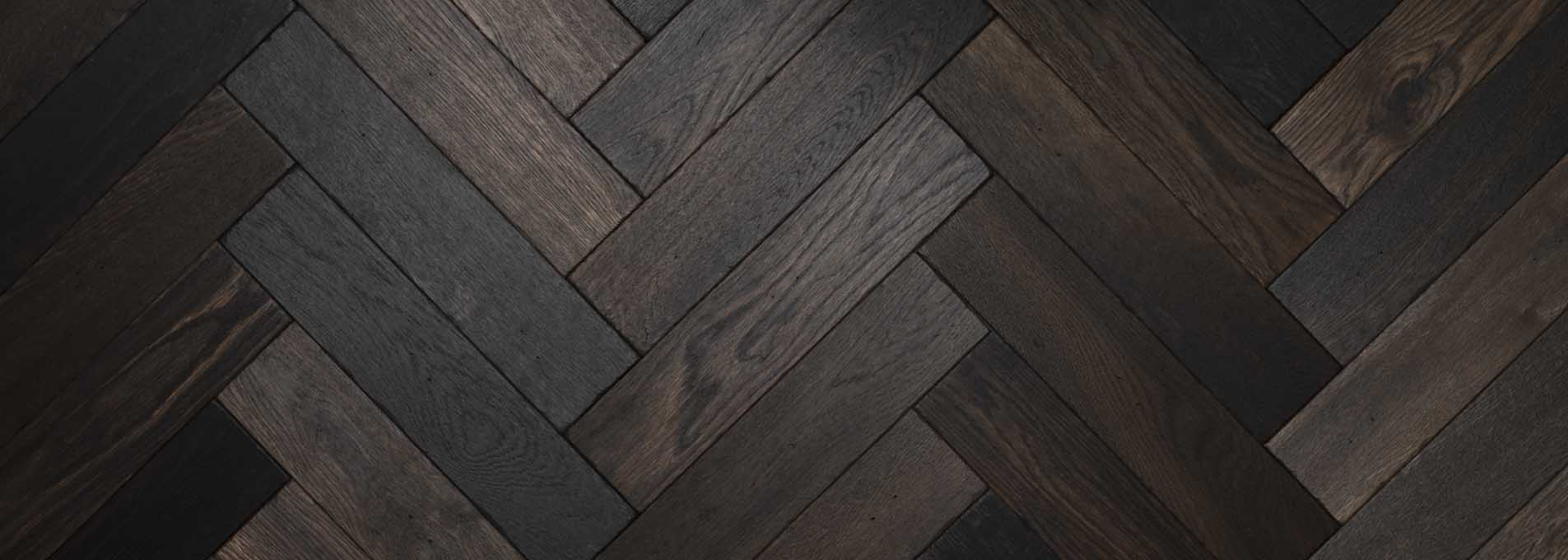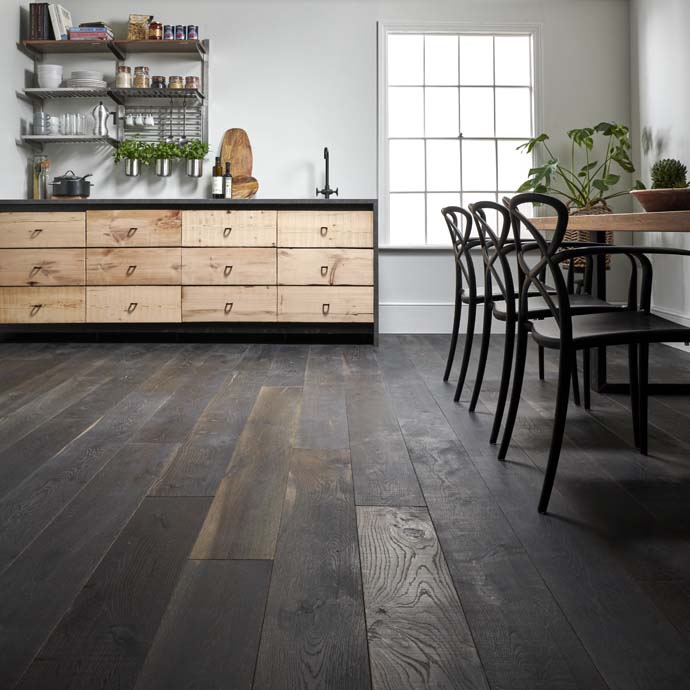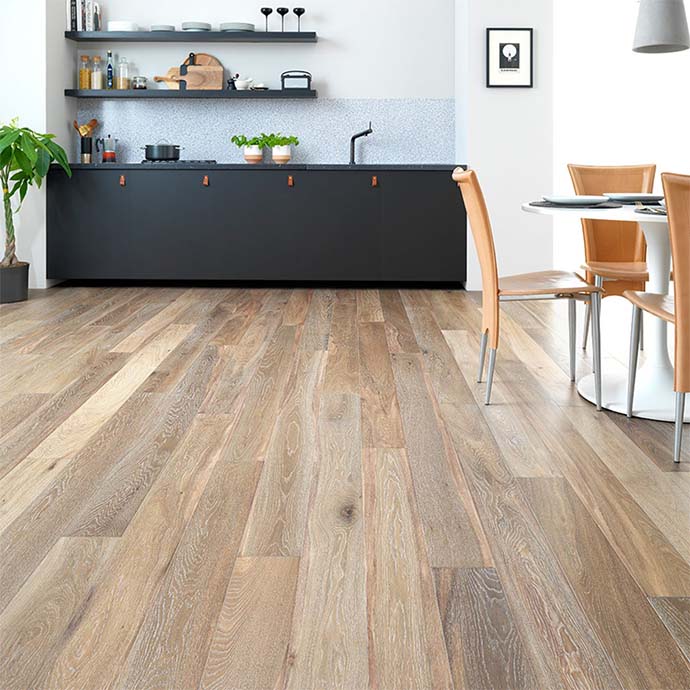What Is Smoking In Wood Floors?

Smoked Oak Woodpecker Flooring
Most of our wood floors are specially treated to further intensify their naturally beautiful colours. Using this process, we play with the tannins in the timber to enhance or invoke tones.
This process dates back to the turn of the twentieth century, it is thought that the original discovery was made in horse stables. At that time, it was noticed that the white English oak beams above the horses were considerably darkened compared to the beams in other parts of the stable and this darkening process was connected to the ammonia in the horses’ urine. With this insight, fuming or smoking as a wood treatment process became common place with arts and crafts furniture makers and to this day, is extremely popular.
Fuming or smoking involves putting the oak into an enclosed environment in which ammonia is introduced into the atmosphere. This enclosed environment might be a closed tank or a sealed tent or some form of container into which only a relatively small amount of ammonia is introduced. The effect of the ammonia in the air is that the colour of the wood is changed.
It is a common mistake that fuming or smoking oak involves the application of the ammonia to the oak, but this is not the case. The change in colour comes about from the wood’s reaction to the presence of ammonia in the atmosphere. Effectively what happens is that the ammonia causes the tannins in the wood to be brought to the surface. The closer the tannins are to the surface, the darker the wood will appear. The longer the wood is exposed to the ammonia, the darker it becomes. The results obtained from fuming or smoking will range from a rich brown colour to almost black.
Essentially, the intensity of the colour and the tone of the colour will depend upon the length of time the wood stays in contact with the ammonia fumes. Periods of as little as twelve hours will provide a lightly fumed effect and 72 hours a darker end result. Furthermore, the higher the temperature in the chamber, as you would imagine, the quicker colour change results will appear, but not only that, the tone will be affected. Hotter temperatures typically introduce red tones and cooler temperatures green tones allowing for creativity when it comes to the fuming or smoking process.



Fumed oak will have large colour variations and you can see this in smooth and brushed finished flooring The more oil you put on the fumed oak the better it will look. As the colour is right through the board it means that any scratches will not show “white” as it is not a stain.
Smoked Oak is treated in the same way but with a different mix of ammonia and in some cases to get the warm golden colour without the extremity of colour variation we introduce wood smoke into the chamber.
To summarise, smoking and fuming don’t just darken the wood – parts with higher sap content are bleached making them lighter. So the overall effect of this process is to accentuate the natural colour variations.
